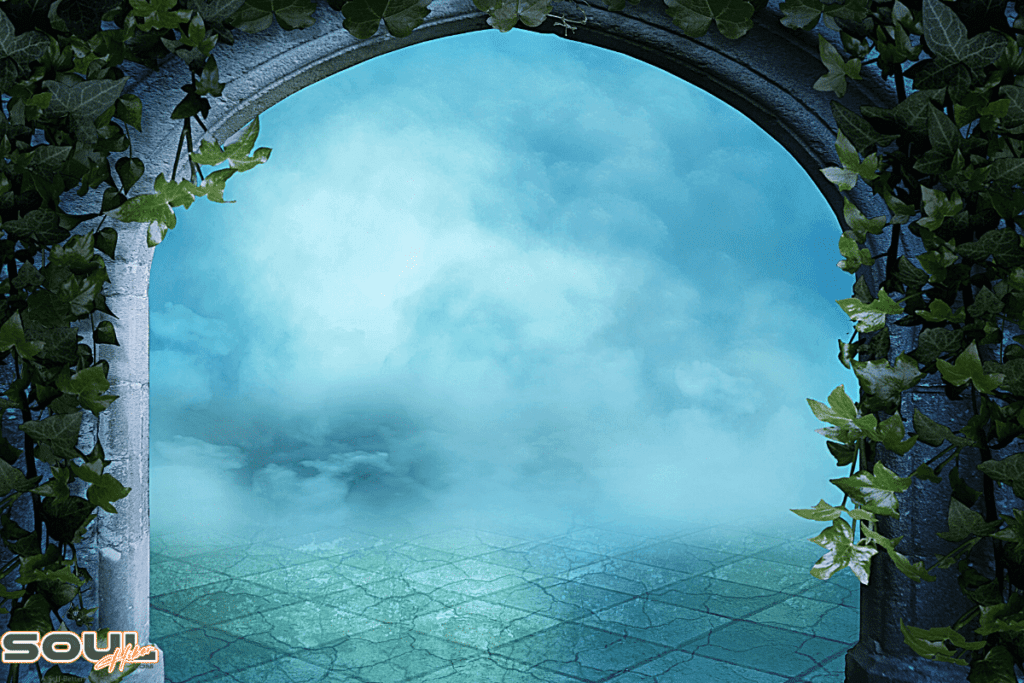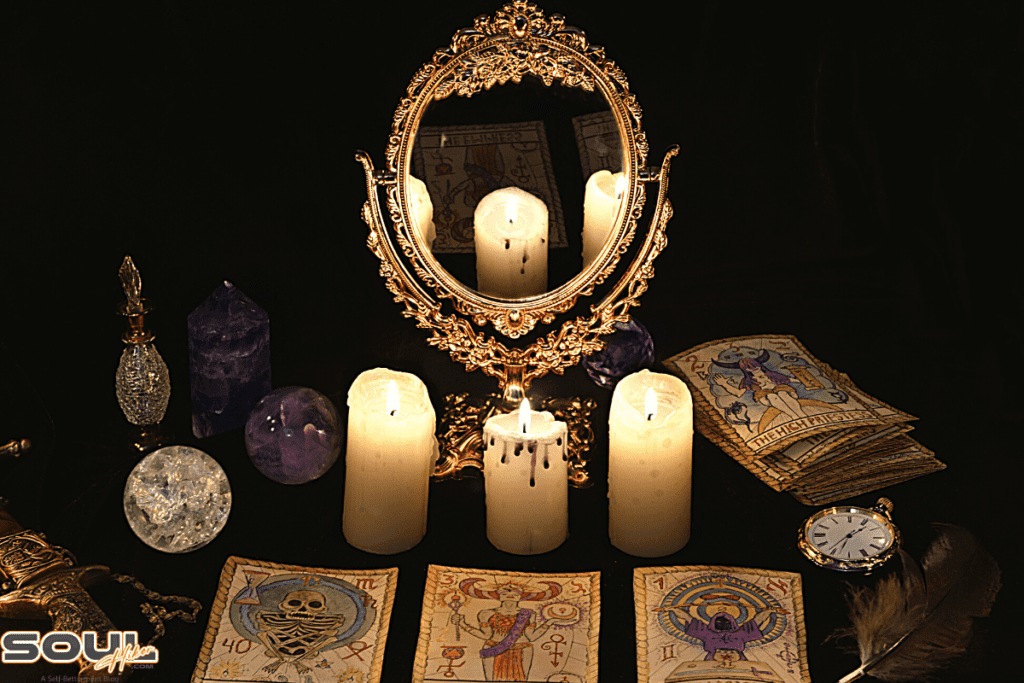Mysticism, often misconceived as a vague spiritual concept, is in essence a profound connection with the Divine, Ultimate Reality, or Cosmic Consciousness. This spiritual quest transcends cultures and traditions, evident in practices from Buddhist meditation to Christian mystic experiences. In our modern, technology-driven era, despite seeming archaic, mysticism is increasingly sought for its deeper meaning and connection, contrasting with the superficiality of daily life. Welcome to our guide on this fascinating subject, where we explore the enduring relevance and richness of mysticism.
Table of Contents
Understanding the Mystical Experience
Mystical experiences are often seen as monumental, life-changing events. They’re akin to an intensified ‘aha’ moment, where one feels an overwhelming sense of unity and interconnection with everything, akin to being part of a grand cosmic symphony.
There are several misconceptions about mysticism:
Myth: Mystics seek to escape reality.
Fact: Mystics aim to delve deeper into the essence of reality.
Myth: Mysticism is exclusive to religious people.
Fact: Mysticism goes beyond religious boundaries, focusing on direct experience rather than fixed doctrines.
Myth: Mystical experiences are rare and only for a select few.
Fact: Anyone is capable of having these experiences; they’re not limited to a privileged group.
A key aspect of mysticism is listening to one’s intuition, which acts like an inner spiritual GPS, guiding through the soul’s journey. This inner voice helps navigate the mystical path, leading to profound insights and experiences.
Historical Perspectives on Mysticism

Mysticism has been a significant aspect of both Eastern and Western traditions:
Eastern Mysticism
This form of mysticism is akin to an extensive exploration of the ocean of consciousness. In Eastern traditions like Hinduism and Buddhism, the focus is on understanding the true nature of reality and the self. Important figures include the Buddha, who enlightened people about the path to enlightenment, and ancient texts such as the Upanishads, which explore cosmic mysteries.
Western Mysticism
Mysticism in the Western context is often linked with religions like Christianity, Judaism, and Islam. It’s more about a deep, personal connection with the divine. Examples include St. Teresa of Avila, who described the soul’s intimate union with God, and the Kabbalah, which offers a mystical interpretation of Jewish theology.
Mystical All-Stars: A Roster of Spiritual Heavyweights
Several key figures stand out in the history of mysticism:
- Rumi: Known for his poetic expressions of love and divine ecstasy.
- St. John of the Cross: Recognized for guiding seekers through the spiritual challenges of the “dark night of the soul.”
- Meister Eckhart: A medieval mystic who made profound spiritual concepts accessible, akin to a wise neighbor.
Mystical Practices and Techniques
Meditation, contemplative prayer, fasting, ascetic practices, sacred texts, mantras, rituals, and ceremonies are integral practices in the mystical journey, each serving a unique purpose.
Meditation is not just a passive activity; it’s a dynamic process of training the mind to observe and clear mental clutter, paving the way for deeper insights. It’s like a mental gym workout for inner growth and understanding.
Contemplative prayer goes beyond typical prayers. It’s akin to a deep, personal conversation with the universe, focusing less on asking for things and more on immersing in the divine presence.
Fasting and ascetic practices are the mystical detox, emphasizing the reduction of physical desires and material distractions to prioritize spiritual growth.
Sacred texts and mantras serve as powerful tools in mysticism. The repetition of mantras and the wisdom found in sacred texts act as guides and inspirations for the mystical journey.
Rituals and ceremonies are the physical expressions of mystical experiences. They range from the dynamic movements of a Sufi whirling to the solemn rites of a Christian mass, serving as spiritual milestones that connect the mystical pursuit with the tangible world.
The Science Behind Mysticism: A Convergence of Views
While science and mysticism might appear as unlikely companions, they are essentially different perspectives attempting to unravel the same cosmic mystery. Psychology approaches mysticism as a study of altered states of consciousness, exploring the hidden depths of the mind’s capabilities. This exploration is akin to charting unknown territories within the human psyche.
Neuroscience offers another intriguing angle. Researchers use tools like MRI scans to observe the brain’s activity during mystical experiences. These studies reveal how certain areas of the brain illuminate, providing a biological window into transcendent states.
The Great Debate: Straddling Subjective and Objective Realities
Mysticism sits at a contentious crossroads where subjective inner experiences meet the objective reality we all share. The debate centers around whether mystical experiences represent a genuine encounter with something beyond ourselves or are merely intense psychological phenomena. This ongoing conversation challenges our understanding of reality, pushing the boundaries of what we consider real and imaginary.
Mysticism and Personal Transformation: The Alchemy of the Soul

Mysticism can be likened to a spiritual makeover show. It transforms perspectives and attitudes, leading to profound personal growth. In this process, the ego, often seen as a persistent and noisy presence, is subdued, making way for a sense of unity and oneness.
This transcendence can lead to inner peace and contentment, a stark contrast to the everyday hustle and bustle. Living a transformed life post-mystical experience is not a return to normalcy but a new way of perceiving and interacting with the world. This change often brings about a renewed purpose and deeper connections with others.
Despite its enlightening potential, the path of mysticism is fraught with challenges. It’s a delicate balance between profound insight and confusion. One major pitfall is the tendency to confuse personal fantasies with divine revelations.
Discernment is crucial in separating genuine mystical insights from mere wishful thinking. Finding a reliable guide on this journey can be challenging. It’s essential to differentiate between those who offer genuine wisdom and those peddling false promises.
Mysticism, while enriching, can sometimes lead us through confusing terrains. Dreams, for instance, are a common area where the mystical and the mundane intersect, often leaving us with more questions than answers.
Our exploration of ‘Sex in Dream Spiritual Meaning‘ delves into how such vivid dreams can be interpreted through a mystical lens, helping seekers differentiate between profound spiritual messages and the normal workings of the subconscious mind.
Busting Myths: The Reality of Mysticism
Mysticism is often shrouded in myths and misconceptions. Contrary to popular belief, it’s not about acquiring magical powers or supernatural phenomena but focuses on inner transformation.
Additionally, while some mystics may choose seclusion, many engage actively with society, using their insights for the greater good. These realities dispel common misunderstandings, highlighting mysticism’s true essence as a profound, transformative journey.
Integrating Mysticism into Everyday Life
Incorporating simple practices like mindful breathing or gratitude into your daily routine is like seasoning your day with a dash of the divine. Juggling your inner mystic with your outer office worker can be a challenge. It’s about finding harmony between these worlds.
Mysticism can transform not just you, but also your interactions with others. It’s like putting on mystical-tinted glasses that change how you view people and relationships.
Mysticism and the Future
In an era of hashtags and high-speed internet, mysticism is finding new expressions – from online meditation groups to virtual reality retreats. Look out for a rise in eco-spirituality and a growing interest in indigenous mystical practices.
In a world grappling with issues like climate change and social inequality, mysticism can offer a perspective grounded in interconnectedness and compassion. It’s like having a spiritual compass for navigating these complex issues.
In wrapping up our mystical journey, it’s clear that mysticism isn’t just about seeking transcendental experiences or escaping reality. It’s a profound path towards understanding the depth of existence, a bridge between the material and the spiritual realms. This journey doesn’t have a final destination. Instead, it’s an ongoing exploration of self-mastery and the universe, an ever-unfolding story where each chapter brings new insights and challenges.
Remember, your mystical journey is uniquely yours. It’s a canvas where your experiences, thoughts, and feelings paint a picture of your spiritual evolution. Don’t be afraid to explore different practices and beliefs. Trust your intuition and be open to where the mystical path may lead you. Seek out like-minded individuals who can offer support, share experiences, and grow with you. Remember, even mystics can use a friend on their journey.
